Public Records in Washington
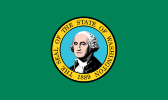 Find public record search resources for state of Washington including, people search, background check and criminal records. Are you trying to start a business with someone, a new date, a new neighbor? You can find out more about anyone, a background check or past addresses. If you are thinking about using a contractor or doing business with anyone you can find not only background checks but professional licenses, including medical license, state bar registration for lawyers or contractor licenses. You can locate people by searching public records.
Find public record search resources for state of Washington including, people search, background check and criminal records. Are you trying to start a business with someone, a new date, a new neighbor? You can find out more about anyone, a background check or past addresses. If you are thinking about using a contractor or doing business with anyone you can find not only background checks but professional licenses, including medical license, state bar registration for lawyers or contractor licenses. You can locate people by searching public records.
Washington Public Record Search
- State of Washington Website
- State of Washington Counties
- Washington Asset Search
Search for personal and corporate assets and property, business and professional licenses in Washington - Washington Background Check
- Washington Birth Certificates
- Washington Courts Records and other Resources
Access to state and local court records, directory of courts in Washington - Washington Business Licenses
Get information about Washington business licensing. - Washington Census Information
Washington statistics for population, ethnicity, housing, geography and businesses. From the U.S. Census Bureau. - Washington Children's Trust Fund
- Washington Contractor Licenses
Search Washington Electrical Contractor, General Contractor licenses. - Washington Corporations
Search Washington corporations by name, number, officer name or registered agent. - Washington Death Records
- Washington Department of Correction Offender Search
The Washington Department of Corrections and Rehabilitation - Washington Department of Education
- Washington Department of Motor Vehicles DMV
- Washington Divorce Records
- Washington Directory of State Agencies
Alphabetical listing of state agencies. - Washington Employee Directory
Search Washington State employee directory by name and agency. - Washington GIS Mapping
Access interactive GIS maps of Washington. - Washington Government Jobs
See Washington state government jobs, civil service job testing and other employment. - Washington Jail and Inmate Records
Search Washington jail and inmate. - Washington Lawyer Search
Search state bar for lawyer registration. - Washington Maps
See various maps including historical maps, contemporary maps, and aerial photographs. - Washington Marriage Records
Search marriage records in Washington. - Washington Medical License
- Washington Property Records
Search Washington state land records - Washington Population Statistics
Population statistics for Washington - Washington Professional License Search
- Washington Public Safety
- Washington Sex Offender Search
- Washington Small Claims Case Lookup
- Washington State Constitution
See the Constitution of Washington. - Washington Trademarks
Need to Search Washington trademarks? - Washington Newspaper Listing
See a list of newspapers in Washington. - Washington Vital Records
Cities in Washington
|
|
Counties in Washington
|
|
Washington State Symbols
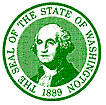 Washington State Seal
Washington State Seal
In 1889, jeweler Charles Talcott designed our first state seal using an ink bottle, silver dollar and a postage stamp. Talcott's brother, L. Grant Talcott, lettered the words, "The Seal of the State of Washington, 1889," and another brother, G.N. Talcott, cut the printing die. More information can be found at the Secretary of State site on the State Seal.
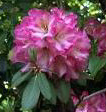 Washington State Flower
Washington State Flower
Coast Rhododendron
In 1892, before they had the right to vote, Washington women selected the coast rhododendron as the state flower. They wanted an official flower to enter in a floral exhibit at the 1893 World's Fair in Chicago. Six flowers were considered, but the final decision was narrowed to clover and the "rhodie," and voting booths were set up for ladies throughout the state. When the ballots were counted, the rhododendron had been chosen as the Washington state flower. In 1959, the Legislature designated the native species, Rhododendron macrophyllum, as the official flower of the state of Washington.
Washington  The State Flag
The State Flag
The state flag and the state seal are similar. Passed in 1923, Washington law describes the flag as having dark green bunting with a state seal in the center. In the late 1890s, a blue and gold military state flag with George Washington's profile on it flew over many cities and towns throughout the state. But when it came to a final decision, the current flag was adopted by the Legislature. According to law, the flag of the United States and the flag of the state shall be prominently installed, displayed and maintained in schools, court rooms and state buildings. For further information about the state flag, check the Secretary of State's web site.
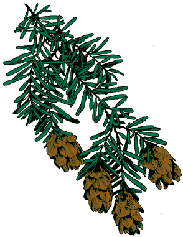 Washington State Tree
Washington State Tree
Western Hemlock
In 1946, an Oregon newspaper teased Washington for not having a state tree. The Portland Oregonian picked out the western hemlock, Tsuga heterophylla for us, but Washington newspapers decided to choose their own and selected the popular western red cedar. State Representative George Adams of Mason County pleaded with the Legislature to adopt the western hemlock. The hemlock, he said, would become "the backbone of this state's forest industry." Adams' bill passed the Legislature and was signed into law in 1947.
 Washington State Bird
Washington State Bird
Willow Goldfinch
The goldfinch is a delicate little bird with a yellow body and black wings, and although it eventually became the official state bird, many other birds were considered for the title. In 1928, legislators let school children select the state bird and the meadowlark won hands-down. It was a nice choice but seven other states already had chosen the same bird. Another vote was taken in 1931 by the Washington Federation of Women's Clubs. Many birds were nominated, but the goldfinch won handily over the tanager, song sparrow, junco and pileated woodpecker. Now there were two state birds and the Legislature decided to leave the final choice to school children. In 1951, children voted for the goldfinch and the Legislature made it unanimous.
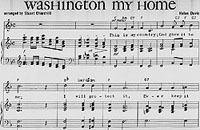 Washington State Song
Washington State Song
"Washington, My Home"
The state song, "Washington, My Home," was written by Helen Davis, arranged by Stuart Churchill, and became the official state song in 1959. But, like the goldfinch, it had some stiff competition from another popular song. Back in 1909, "Washington Beloved" was adopted, sort of, by the Legislature. Professor Edmond Meany, the historian, wrote the words and Reginald de Koven, who also wrote "O Promise Me" and other operettas, wrote the music. Butthe official designation for the song was never formally introduced as a bill and so was not part of the state's code of law. When a state senator from South Bend introduced a bill in 1959 to make "Washington, My Home" our state song, it was approved unanimously.
In April, 2002, the state song was performed at the state Capitol by the Tumwater Girls' Choir, under the direction of Jack Arend, choir director.
Washington  State Fish
State Fish
Steelhead Trout
The steelhead trout is an anadromous fish, meaning it returns to fresh water rivers to spawn. The scales of the steelhead shine flecks of silver with a gray spotted back from head to tail and an intensely white belly; the two colors separated by a hint of opalescent pink. Steelhead trout is one of the most popular fish for recreational fishing, a major industry in Washington State. The steelhead trout (Salmo gairdnerii) was adopted by the Legislature as a state symbol in 1969.
 Washington State Gem
Washington State Gem
Petrified Wood
The geological history of our state has encompassed many great changes, one of them being the many lava flows from volcanic fissures. Centuries ago, the interior of Washington was swampy and mild with many trees such as cypress, oak, elm and gingko growing in wet areas. Layers of logs were preserved with each new lava flow, and as the layers grew deeper, many of the logs became waterlogged and lay protected in deep water. Over time, water continued to seep through the lava and permeate the wood with silica. Eventually, the wood fiber was completely replaced by silica, thus petrifying many logs. The petrified wood is perfect in form and detail to the original wood. In 1975, petrified wood was adopted as the state gem. The best place to see petrified wood is the Gingko Petrified Forest State Park in Vantage.
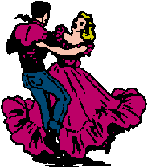 Washington State Dance
Washington State Dance
Square Dance
On April 17, 1979, the square dance became the official Washington state dance. When the pioneers came west, they brought with them a dance called the quadrille, which means square in French. The pioneers liked the simpler term and so the square dance was born. The dance is known for its series of figures and footwork. Dancers are directed by a caller. It is easy to learn, a good form of exercise, and fun.
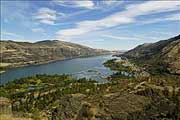 Washington State Folk Song
Washington State Folk Song
"Roll On, Columbia, Roll On"
In the early 1940s, the federal Bonneville Power Administration produced a movie encouraging rural residents in the Pacific Northwest to electrify their homes and farms with the power being generated by the newly-built Bonneville and Grand Coulee Dams on the Columbia River. As part of the project, BPA hired folksinger Woody Guthrie at $270 for 30 days to write songs for the movie. Guthrie wrote 26 songs, the most popular of which was "Roll On, Columbia, Roll On," an ode to the harnessing of Washington's mightiest river. It was approved as the official Washington state folk song by the Legislature in 1987.
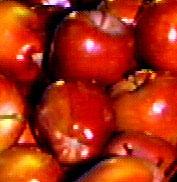 Washington State Fruit
Washington State Fruit
Apple
Washington is the nation's top apple-producing state, so it is appropriate that the apple was named a state symbol in 1989, the centennial year. A favorite fruit around the world, the apple comes in many different colors, sizes and varities. From the beautiful blossoms of spring, to the heavily laden branches in autumn, the apple trees of eastern Washington represent one of the largest industries in the state. The Washington apple is certainly one of the most recognized symbols of the state worldwide.
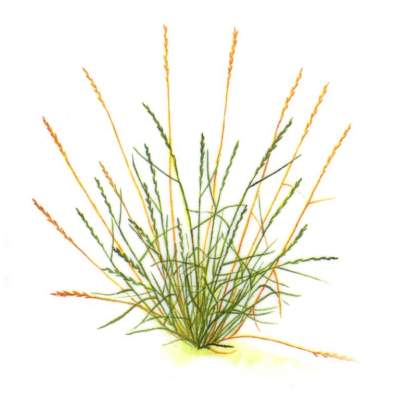 Washington State Grass
Washington State Grass
Bluebunch Wheatgrass
Althoughmany state symbols are readily identifiable with the western part of the state, bluebunch wheatgrass is a state symbol that is unique to eastern Washington. Bluebunch wheatgrass was a blessing to Washington's pioneer farmers and continues to play a major role in our agriculture industry today. It was adopted by the 1989 Legislature as the official state grass. Its botanicalname is Agropyron spicatum.
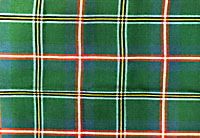 Washington State Tartan
Washington State Tartan
A tartan is a design for the weaving of cloth consisting of perpendicular bands of contrasting colors on a solid background. The Washington State tartan was designed in 1988 by Vancouver, USA Country Dancers Margaret McLeod van Nus and Frank Cannonita to commemorate the Washington State Centennial celebration. It is identified by the background color green, which represents the rich forests of Washington, the "Evergreen State." The perpendicular bands of contrasting colors represent the following features: blue for the lakes, rivers and ocean; white for the snow-capped mountains; red for the apple and cherry crops; yellow for the wheat and grain crops; and black for the eruption of Mount St. Helens. The bill, designating a state tartan, was signed into law in 1991. The Council of the Scottish Tartans Society also affixed its seal to the official Certificate of Accreditation in 1991.
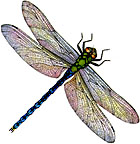 Washington State Insect
Washington State Insect
Green Darner Dragonfly
In 1997, the common green darner dragonfly, Anax junius Drury, became Washington's official state insect after a group of students at Crestwood Elementary School in Kent brought the idea to the Legislature. Students from over 100 school districts statewide participated in the selection of the common green darner dragonfly. Also known as the "mosquito hawk," this insect can be found throughout Washington and is a beneficial contributor to the ecosystem because it consumes a large number of insect pests. It is easily recognizable by its bright green head and thorax, it has a four to six-inch wingspan and can fly 25 to 35 miles per hour. There are over 400 different species of dragonflies. Dragonflies existed prior to the dinosaur age and some had up to a three-foot wing span. "Darner" is one family of dragonflies and the common green (Anax junius) was first sighted and recorded by Drury in 1773.
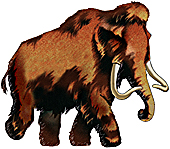 Washington State Fossil
Washington State Fossil
Columbian Mammoth
Following a four-year effort by students from Windsor Elementary School near Cheneyto have this behemoth designated as our state fossil, the Legislature recognized in 1998 that the large, hairy prehistoric elephants of the extinct genus Mammuthus roamed the North American continent, including the Pacific Northwest, during the Pleistocene epoch (ice ages). Mammoth is the common name given to any member of an extinct genus Mammuthus of the elephant family. The first North American mammoths migrated across the Bering Strait from Asia down through Alaska about two million years ago. Nearly all mammoths died out about 10,000 years ago. From studies based on deposits of the Columbian mammoths, M. columbi, it is clear that grasses featured prominently in their diets. The maximum life expectancy of the mammoth would have been 60 to 65 years. The males grew to the size of modern adult elephants; females were about half that size. Several years ago, fossils of the Columbian mammoth were found on the Olympic Peninsula.
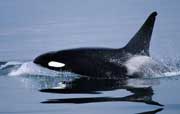 Washington State Marine Mammal
Washington State Marine Mammal
Orca
As a result oftwo years of research and persuasion by second graders from the Crescent Harbor Elementary School in Oak Harbor, the Legislature designated the orca, Orcinus orca, as the official marine mammal of the state of Washington in 2005. Many people visit Washington state to watch orcas; the orca is a significant symbol for the Native American culture; there are pods of orcas that migrate annually through Puget Sound; and the orca is easily recognizable because of its distinct markings. The designation is intended to promote orca awareness and to encourage protection of the natural marine habitat.
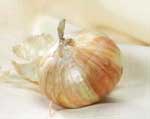 Washington State Vegetable
Washington State Vegetable
In 2007, the Walla Walla sweet onion was designated as the official vegetable of the state of Washington.
The Walla Walla Sweet is from Walla Walla and is only grown properly in the Walla Walla Valley. The Walla Walla Sweet finds its origins on the island of Corsica. Over a century ago, a retired French soldier found a sweet onion seed there and brought it to the Walla Walla Valley. The sweet onion had impressive winter hardiness well-suited for the climate of southeastern Washington. Soon he and other immigrants in the area began harvesting the seed. After several generations of careful hand selection, the sweet onion developed greater sweetness, size, and shape. Today, there aremany growers producing Walla Walla Sweet onions on farmland in the Walla Walla Valley. Sweet onion season is mid-June through September.
The measure was a class project for a seventh-grade honors social-studies class at Eatonville Middle School. In prior years, the bill had also been a project of a Kirkland Junior high school.
Washington State Amphibian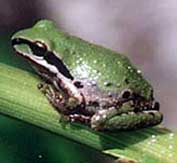
Pseudacris regilla
In 2007, the Pacific chorus frog was designated as the official amphibian of the State of Washington.
Because Pacific chorus frogs live in every county in the state and on both sides of the Cascades, they are an excellent choice as an emblem for the whole state. The Pacific chorus frog is charming and makes beautiful sounds. Less than two inches long, they swell their throat sacs to three times the size of their heads to send their calls into the night. This amphibian is useful because it eats insects, including mosquitoes. It is recognizable by the black stripe through the eye to the shoulder, and can be brown, tan, grey or green. A native amphibian, it is preyed upon by bullfrogs, snakes, raccoons, shorebirds, hawks and ducks.
A third grade class at Boston Harbor Grade School in north Olympia, demonstrated excellent knowledge about the political process in making this proposal to the Legislature as the project involved science, research, art, and persuasive writing.
Washington State Ship
Lady Washington
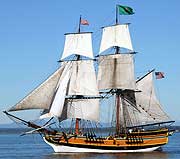 The legislature designated the Lady Washington as the official ship of the state of Washington in 2007.
The legislature designated the Lady Washington as the official ship of the state of Washington in 2007.
Built over a two-year period and launched on March 7, 1989, the ship was built in Aberdeen by the Grays Harbor Historical Seaport Authority. Master shipwrights from all over the Pacific Northwest constructed her near the confluence of the Wishkah and Chehalis rivers. The Lady Washington is based in Aberdeen.
A reproduction sailing ship of the original Washington/Lady Washington that sailedduring approximately 1750-1798, the vessel type is a "brig," indicating the configuration of the sails.
The Office of the Secretary of State for the state of Washington holds a mortgage on the vessel to secure the investment of the people of Washington.
(photo courtesy of Ron Arel)
Washington StateEndemic Mammal
Marmota olympus
 In 2009, the Olympic marmot, the only endemic mammal in Washington state, was designated as the state endemic mammal following a proposal from the 4th and 5th graders at Wedgwood School in Seattle. The Olympic Marmot inhabits the Olympic Peninsula in the western section of Washington. Olympic Marmots are highly social animals and may live in groups of over a dozen animals. Gregarious bonds are made between animals in a family. Olympic Marmots identify each other by touching noses and smelling cheeks. Olympic Marmots hibernate from September to May. During the morning and afternoon on summer days, they feed and spend their time sunbathing on rocks. In the evening, they return to their burrows. Olympic Marmots are relatively easy to see during the summer months along Hurricane Ridge in the Olympic National Park.
In 2009, the Olympic marmot, the only endemic mammal in Washington state, was designated as the state endemic mammal following a proposal from the 4th and 5th graders at Wedgwood School in Seattle. The Olympic Marmot inhabits the Olympic Peninsula in the western section of Washington. Olympic Marmots are highly social animals and may live in groups of over a dozen animals. Gregarious bonds are made between animals in a family. Olympic Marmots identify each other by touching noses and smelling cheeks. Olympic Marmots hibernate from September to May. During the morning and afternoon on summer days, they feed and spend their time sunbathing on rocks. In the evening, they return to their burrows. Olympic Marmots are relatively easy to see during the summer months along Hurricane Ridge in the Olympic National Park.
